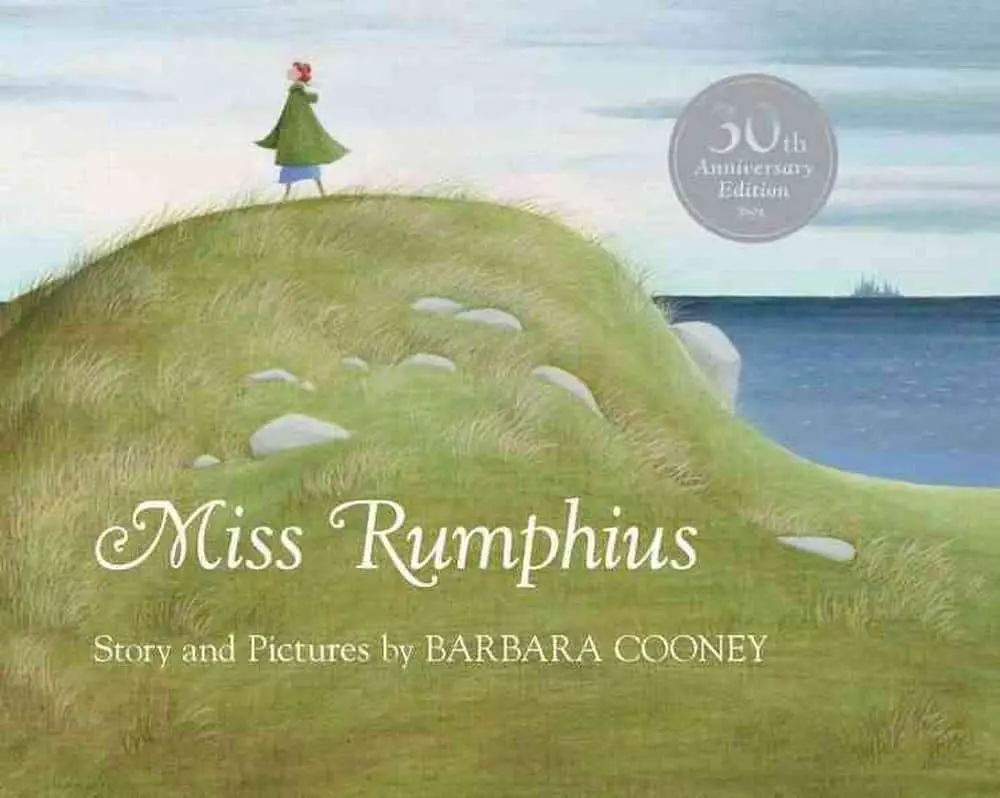Miss Rumphius by Barbara Cooney (1982) is a beautiful picture book with a gentle message encouraging children to create beauty in the world. Cooney’s art is a mixture of full-bleed landscapes and spot illustration.
That said, this is a classic example of an old picture book with an environmental message which has not held up well, at least outside America.
(Actually, not so well within America, either. Miss Rumphius features cigar store Indians in it and on the prow of the ship.)
SETTING OF MISS RUMPHIUS
I wondered why I hadn’t seen this book as a child, but as I kept reading I understood why. I grew up in the South Island of New Zealand, where lupines are celebrated by tourists, but are also a massive environmental problem. One does not simply go around throwing lupine seeds all over the show. Not in New Zealand, anyhow. I’m not sure what the lupine situation is in the Americas, where they should stay, but regardless, lone operators would be ill-advised to scatter seeds far and wide.
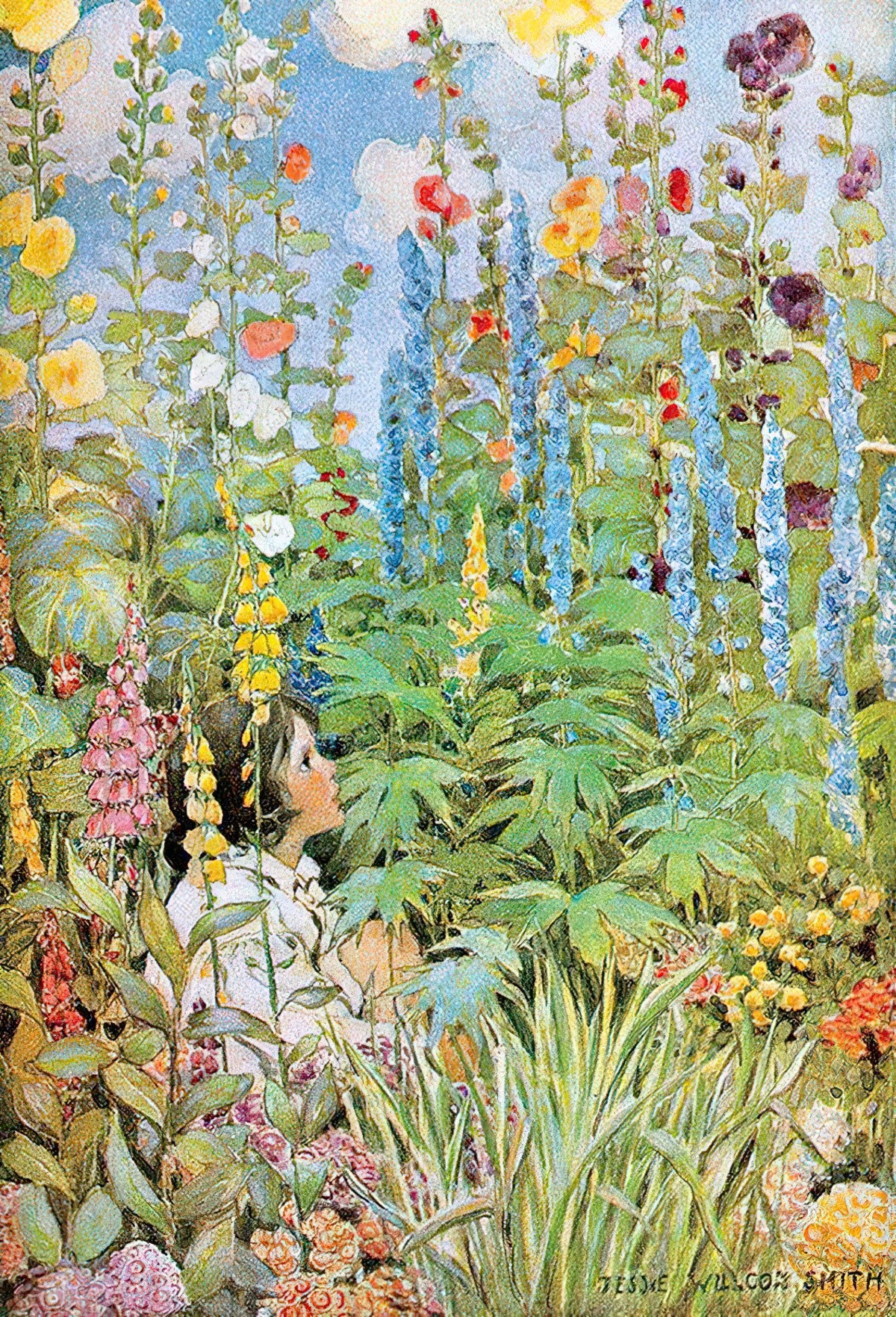
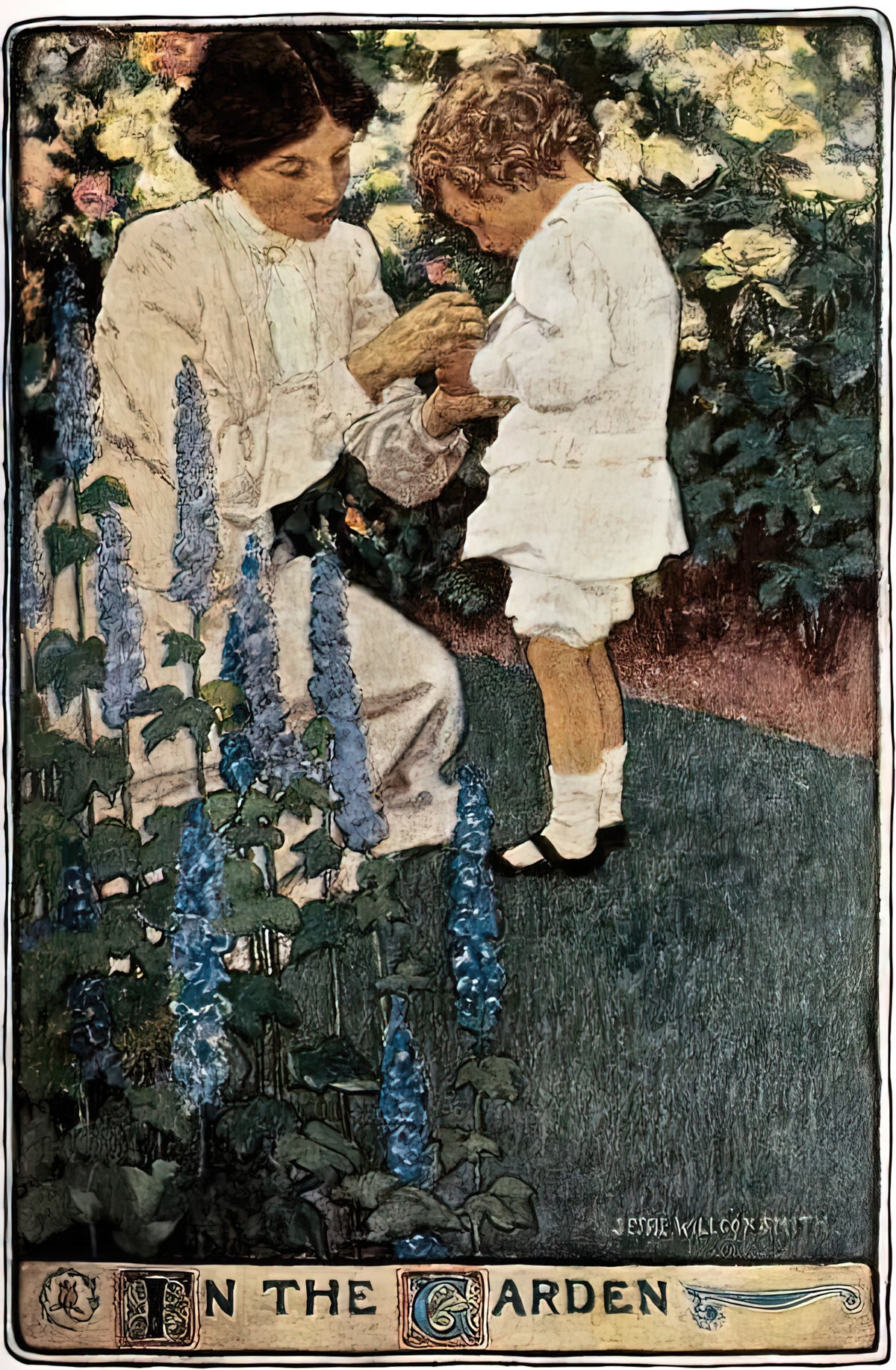
We now know that seed bombing the ecosystem is dangerous, no matter how beautiful the flower. New Zealand has learned this lesson time and time again, and so has Australia. Rabbits are one example, first introduced ‘to make the landscape feel more like home’ and so white people could enjoy fox hunting. Shaun Tan and John Marsden created The Rabbits, a freaky picture book which critiques this practice rather than celebrating it.
STORY STRUCTURE OF MISS RUMPHIUS
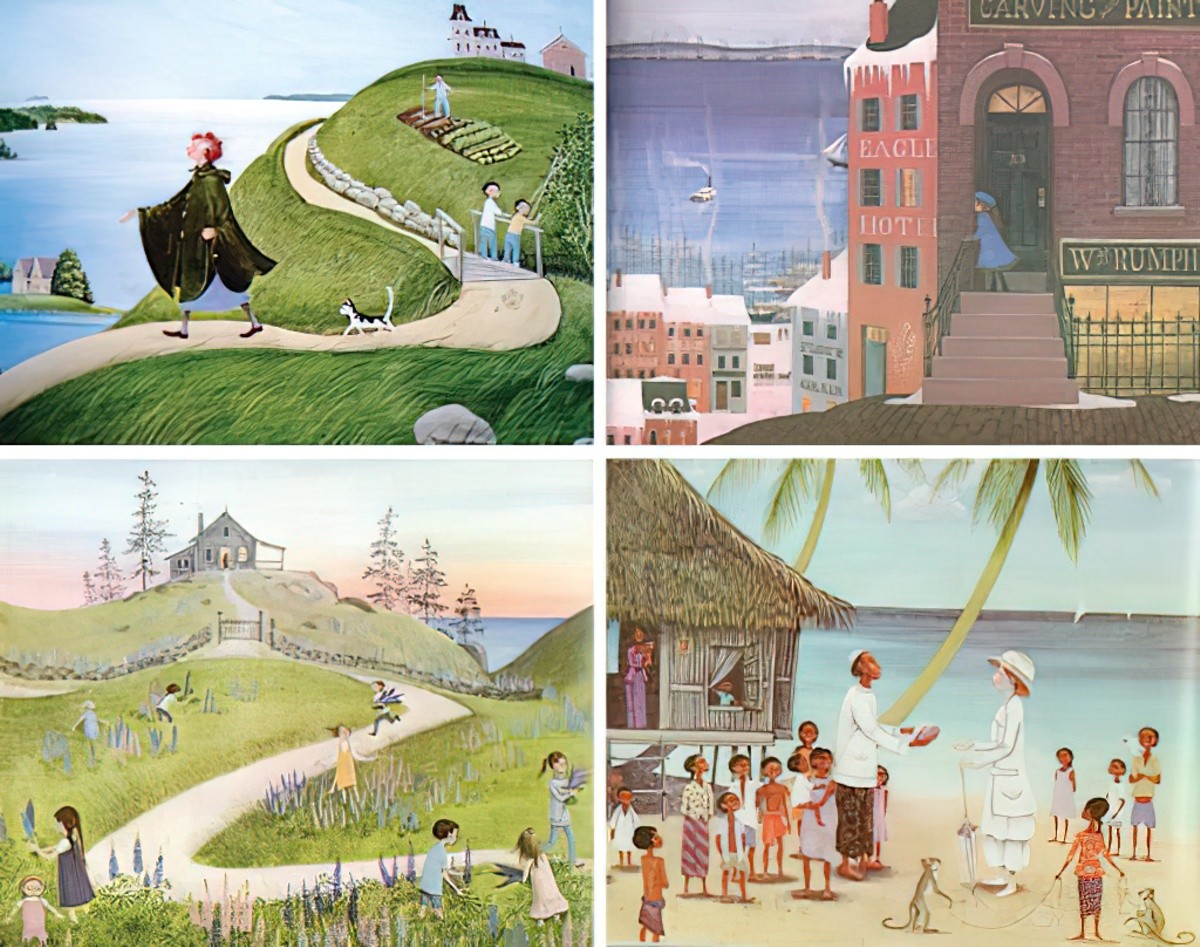
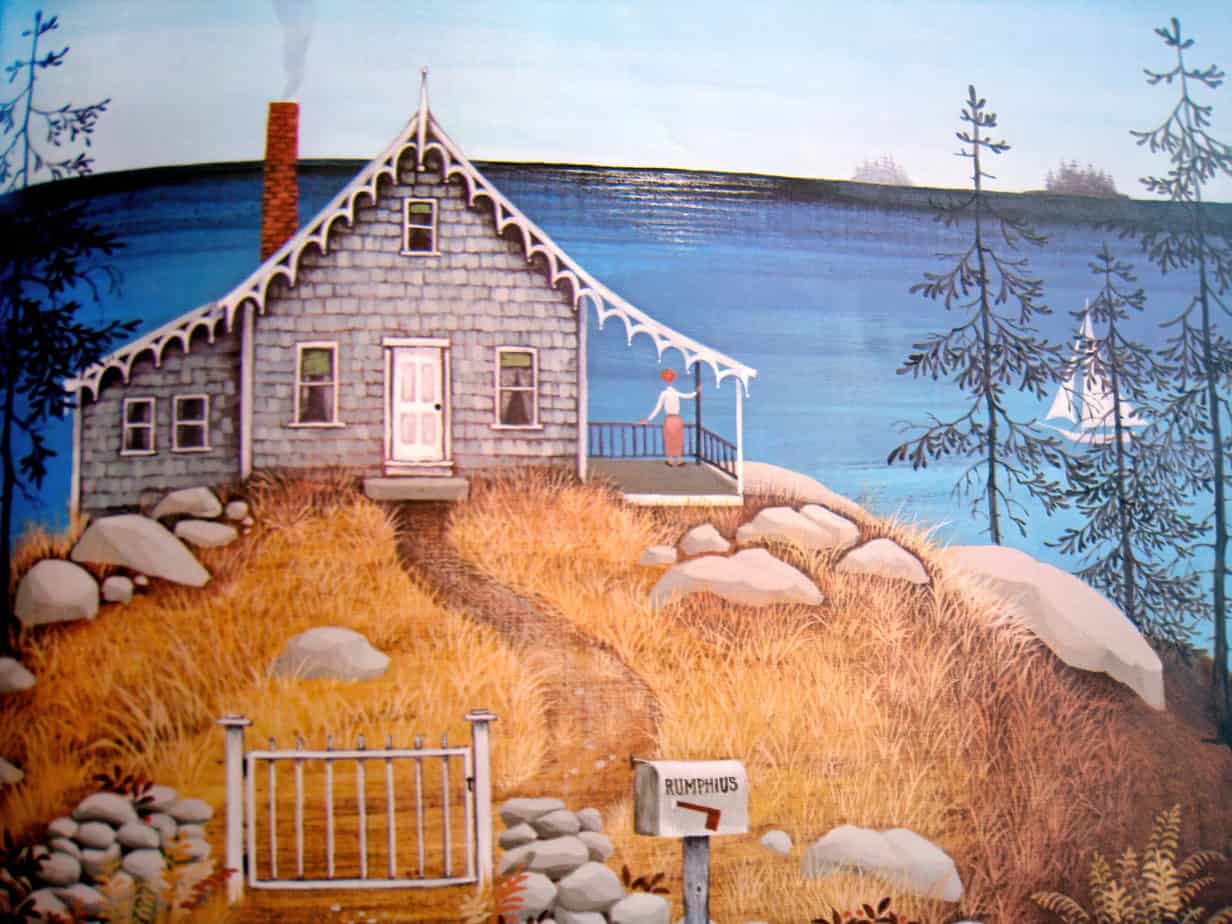
Miss Rumphius is a classic home-away-home picture book.
Miss Rumphius was inspired by the real life “Lupine Lady,” Hilda Hamlin, who spread lupine seeds along the Maine coast, as well as Cooney’s own experiences traveling the world.
Wikipedia
Many picture books are about a character who leaves home, has an adventure then returns having changed a little, but most of these adventures take place over a single 12 hour day. The child or child-proxy learns something like how to be brave, to not to be afraid of monsters, or perhaps the outing is purely carnivalesque.
Stories set over a short period are often wonderful, but “Miss Rumphius” stands apart because this particular home-away-home story takes place over an entire lifetime. This gives a story an epic feel, and we sense we’re reading something important.
“Miss Rumphius” is an example of a story-within-a-story, and opens with the great-niece telling the story of her great-aunt. We are encouraged to believe this person is a real historical figure.
PARATEXT
Barbara Cooney’s story of Alice Rumphius, who longed to travel the world, live in a house by the sea, and do something to make the world more beautiful, has a timeless quality that resonates with each new generation. The countless lupines that bloom along the coast of Maine are the legacy of the real Miss Rumphius, the Lupine Lady, who scattered lupine seeds everywhere she went. Miss Rumphius received the American Book Award in the year of publication.
marketing copy
SHORTCOMING
The story opens with this image, in which Alice is painting a picture. Clearly she already appreciates beauty. Remembering this image, I expected Alice would grow up to be a painter of flowers and landscapes (but I was wrong). She has her back turned to the other girls, which has a bit of a ‘not like other girls’ message. The other young women are older of course, but if they seem interested in beauty it’s in beautifying themselves. Their noses are snootily in the air, discouraging audience empathy with them.
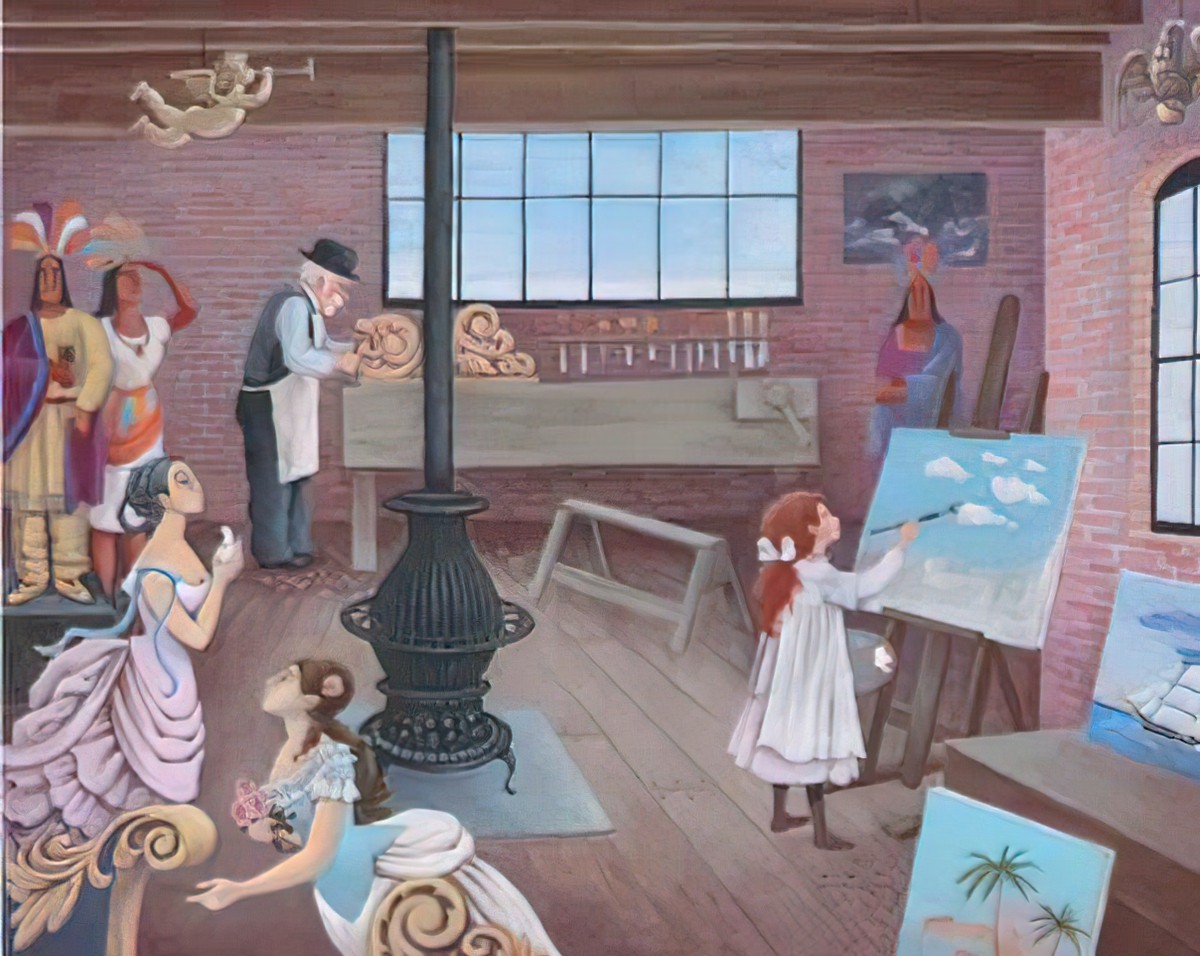
Child Alice is a cute character, who looks especially adorable sitting on her grandfather’s lap.
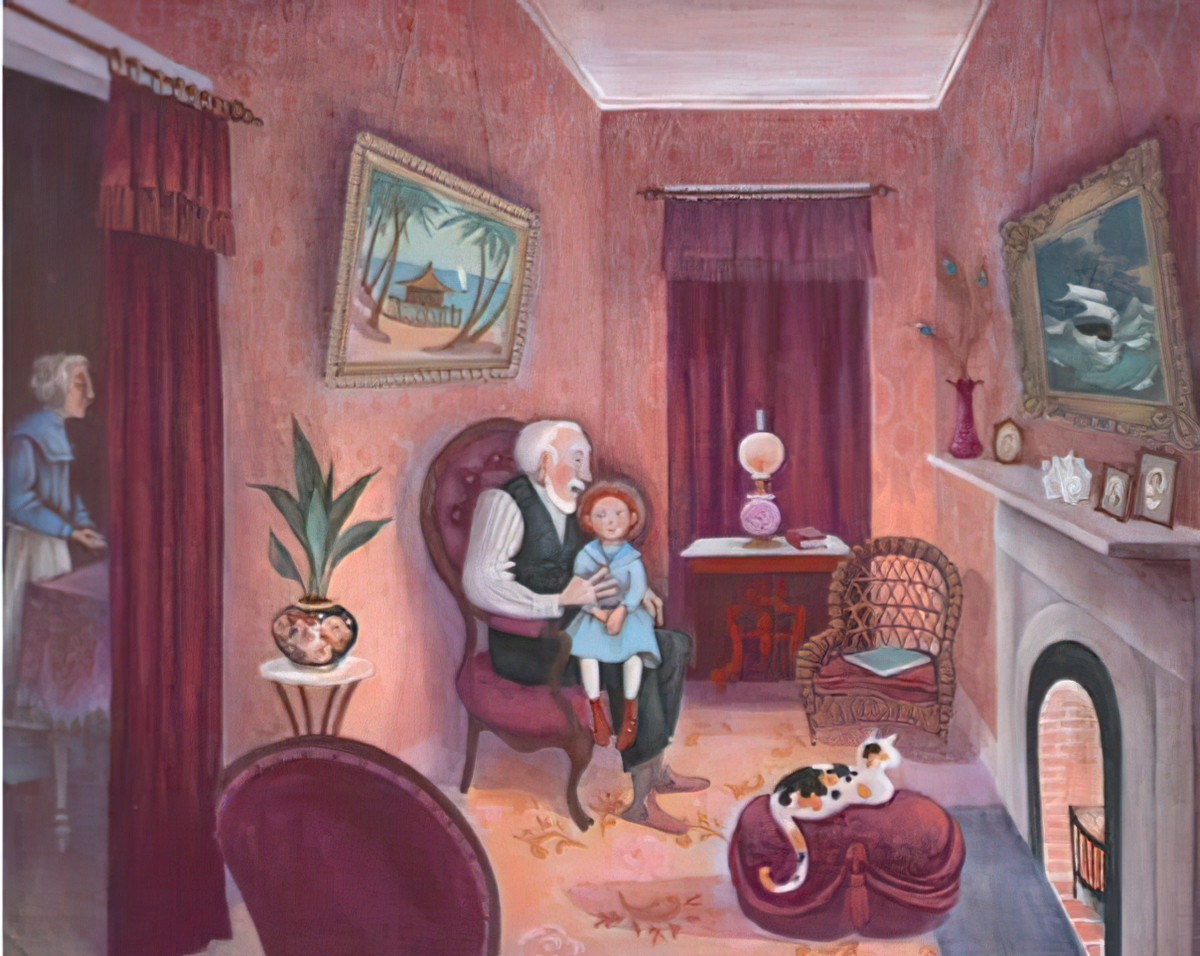
In the evening Alice sat on her grandfather’s knee and listened to his stories of faraway places. When he had finished, Alice would say, “When I grow up, I too will go to faraway places, and when I grow old, I too will live beside the sea.”
Does she have a moral shortcoming? Yes, and it’s an especially childlike one: Alice is selfishly thinking about her future only in terms of herself. Alice will go on adventures, Alice will have fun. The grandfather gently reminds her that personal aspirations are great, but we must also think of others and how we can give back to the world.
I’m reminded of how as a kid I used to pray every night to grow taller. (I imagined myself as an adult over six feet tall. Never happened.) But I had completely missed the point of prayers, in which we were supposed to ask the Lord’s help for bigger things, outside ourselves. I was using and abusing prayers. (No one heard me say these things, so no one was there to set me straight.)
DESIRE
Alice’s desires in this story are right there on the page, and it’s satisfying for the reader to see Alice achieve her heart’s desire.
Then Barbara Cooney makes use of a gap, and Alice changes from a girl into a woman in two sentences.
She went to school and came home and did her homework.
And pretty soon she was grown up.
Some illustrators work on a ‘stage’, while others are more ‘cinematic’, changing the camera around, including various angles and a mixture of close ups, medium shots and long shots. Barbara Cooney was definitely a ‘stage’ illustrator, working more as a set designer than as a film director. Her illustration style was a little folk arty, and this impression is partly because her main character (in particular) is either side-on or face-on in every image. We don’t see the top-downs, facial close-ups, or anything like that. The stage setting works well for an epic story that takes place over a lifetime, lending gravitas. The folk arty style also links this new story to a lengthy tradition.
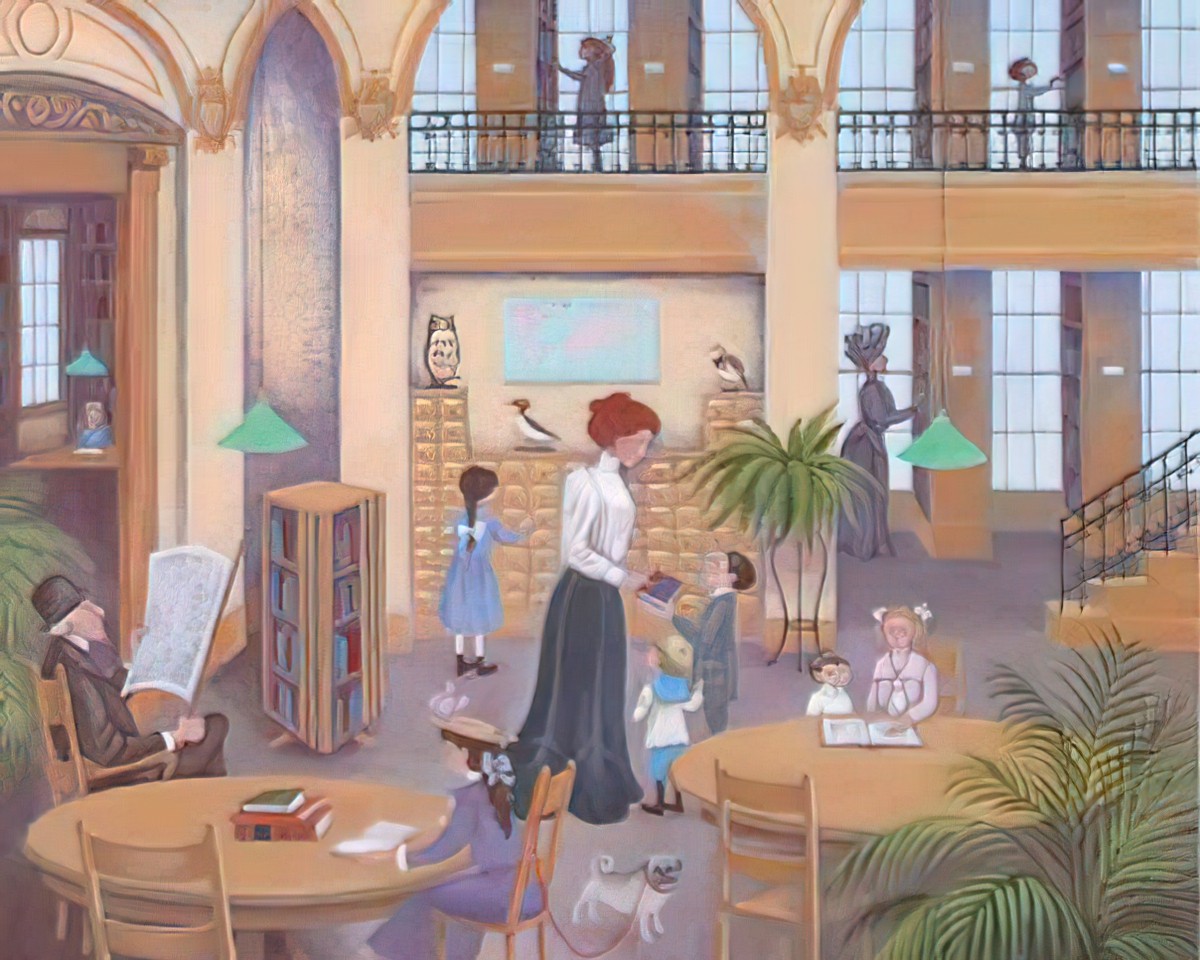
In the illustration below, young Miss Rumphius faces in the opposite direction from the page turn, which offers readers a pause.
Alongside Miss Rumphius we also pause, and wonder what she’s thinking. The conservatory setting is perfect for this scene, making use of the symbolism of windows, in which a character commonly looks through a ‘barrier’ of glass and wonders what it would be like to explore afar.
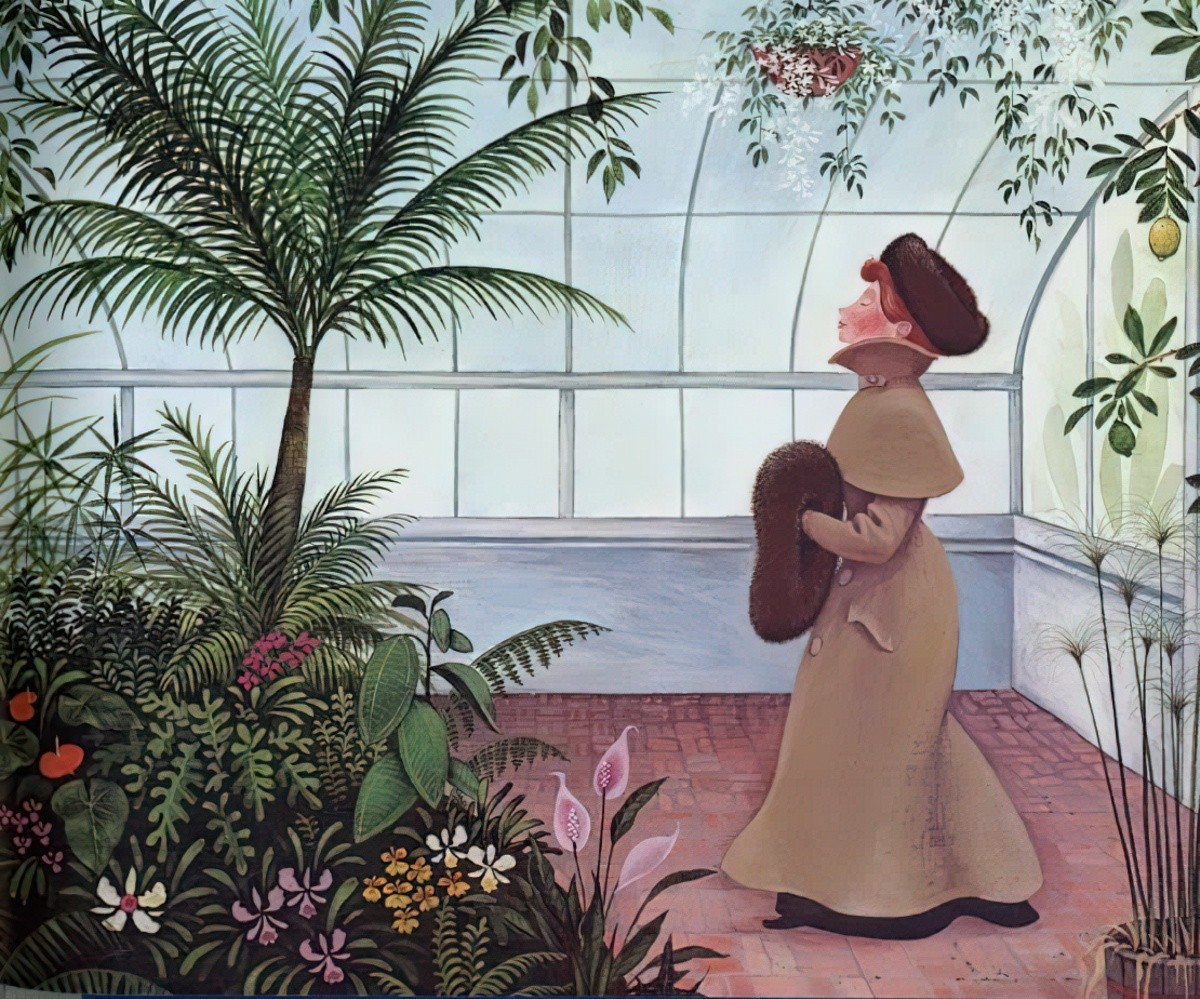
OPPONENT
When Miss Rumphius hurts her back after descending from a camel, this is such an odd detail it seems realistic, and I wondered if it actually happened.
Miss Rumphius’s back problems are her lifelong nemesis, preventing her from doing what she loves the most, exploring in nature.
PLAN
Miss Rumphius gets old and though we are not told that the grandfather has died, we can deduce. She remembers what he said, and feels she has not yet created beauty in the world. So she decides to start small, at home, and make her garden beautiful. When her back allows, she goes wider, and scatters seeds everywhere.
THE BIG STRUGGLE
In a gentle, cosy, reassuring story like this one, you’re not going to get anything resembling a battle, though the scene of Miss Rumphius in bed takes the reader close to death, at least as we imagine death looks. In this part of a story, the main character comes close to death if not physically then spiritually. Miss Rumphius looks defeated.
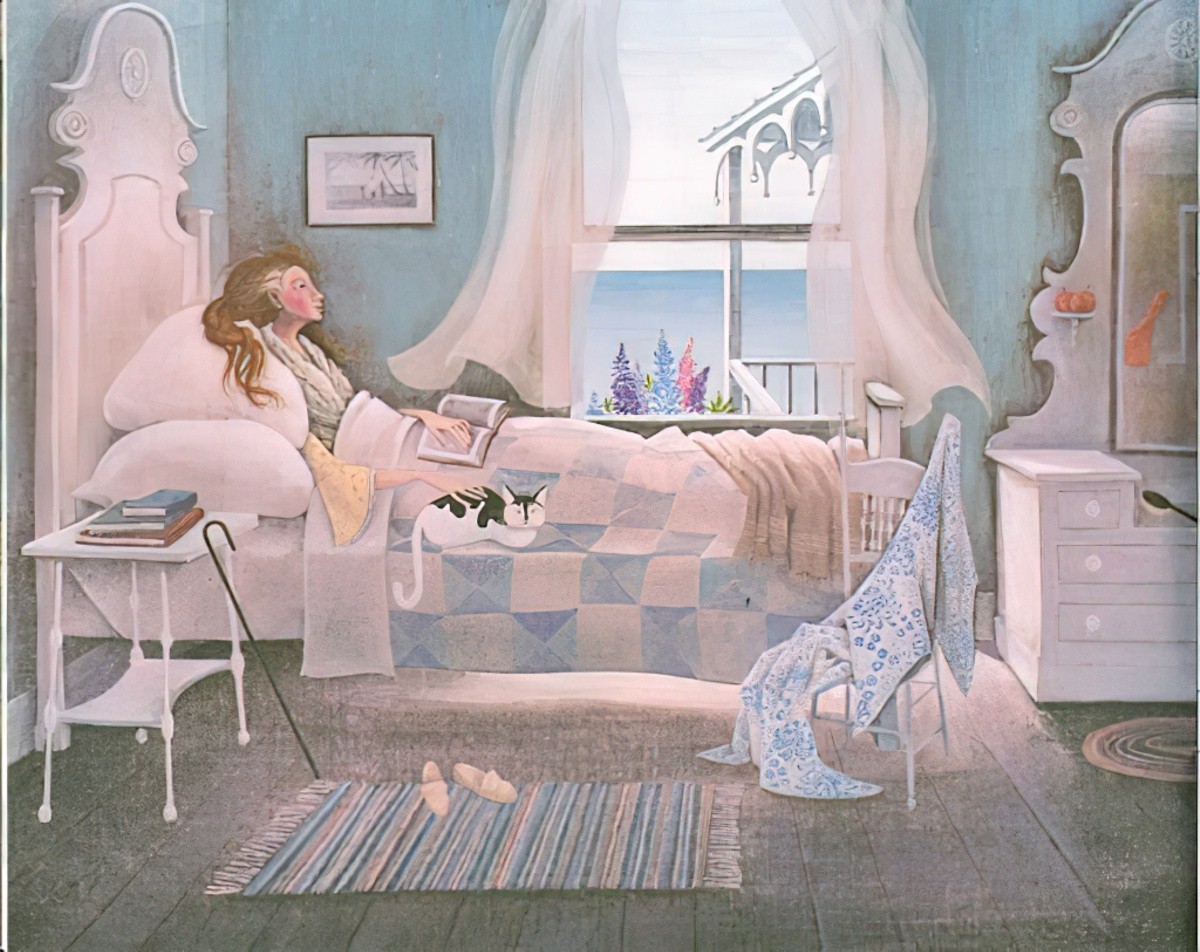
I haven’t done an official count-up, but I am starting to notice how few contemporary picture books include scenes of characters sick in bed. Older picture books are more likely to contain such a scene. I wonder if this reflects a culture change, in which the West has lost the art of convalescence. Health care is much improved for many of us, but we are now expected to get straight back up after an illness, or surgery, or even childbirth, and get right back into it. Anything less is now a sign of weakness.
ANAGNORISIS
Miss Rumphius realises that her passion for gardening can be expanded and this can be her way of adding beauty to the world, as advised by her beloved grandfather. The plot is becoming more circular, emphasising the cycle of life when an elderly person remembers their own grandparent.
NEW SITUATION
Every day there are more and more lupins.
(Oh dear)
All the children and locals enjoy the colourful landscape created by Miss Rumphius.
EXTRAPOLATED ENDING
Barbara Cooney herself died in the year 2000. I’m guessing Miss Rumphius is long gone, too. Of course, this would’ve been a different story altogether if Miss Rumphius had died on the page.
RESONANCE
Barbara Cooney created many picture books over her lifetime, but three stand out: Miss Rumphius is one of them. The others are Chanticleer and the Fox, published early in her career in 1959, and the Ox-Cart Man, released three years earlier than Miss Rumphius in 1983. These are perhaps the most notable because they’re the ones which won the biggest awards.
One of Cooney’s sons, Charlie Porter, was a climate change scientist, so I’ve no doubt Cooney cared greatly about environmental matters. Although I feel the environmental message of Miss Rumphius has dated, I don’t think many readers worry too much about that, seeing the planting of the lupins as a symbolic gesture, perhaps. In 2012 Miss Rumphius was ranked number 13 among the “Top 100 Picture Books” in a survey published by the American School Library Journal.
The deeper message will never date: Leave this world having made it a better place. This is one way humans can play with the idea of immortality.
COMPARE AND CONTRAST
Growth for the sake of growth is the ideology of the cancer cell.
Edward Abbey
Another book with a strong moral message is More and Better by Margaret Neve, also illustrated in folk art style.
We’ve long known that greed as applied to personal items is immoral. It’s interesting how much longer it took us to realise that when it comes to the environmental, more (lupins) doesn’t necessarily mean better.
If you enjoy Barbara Cooney’s illustration you will probably enjoy the paintings of Janet Bell and Eloise Wilkin.
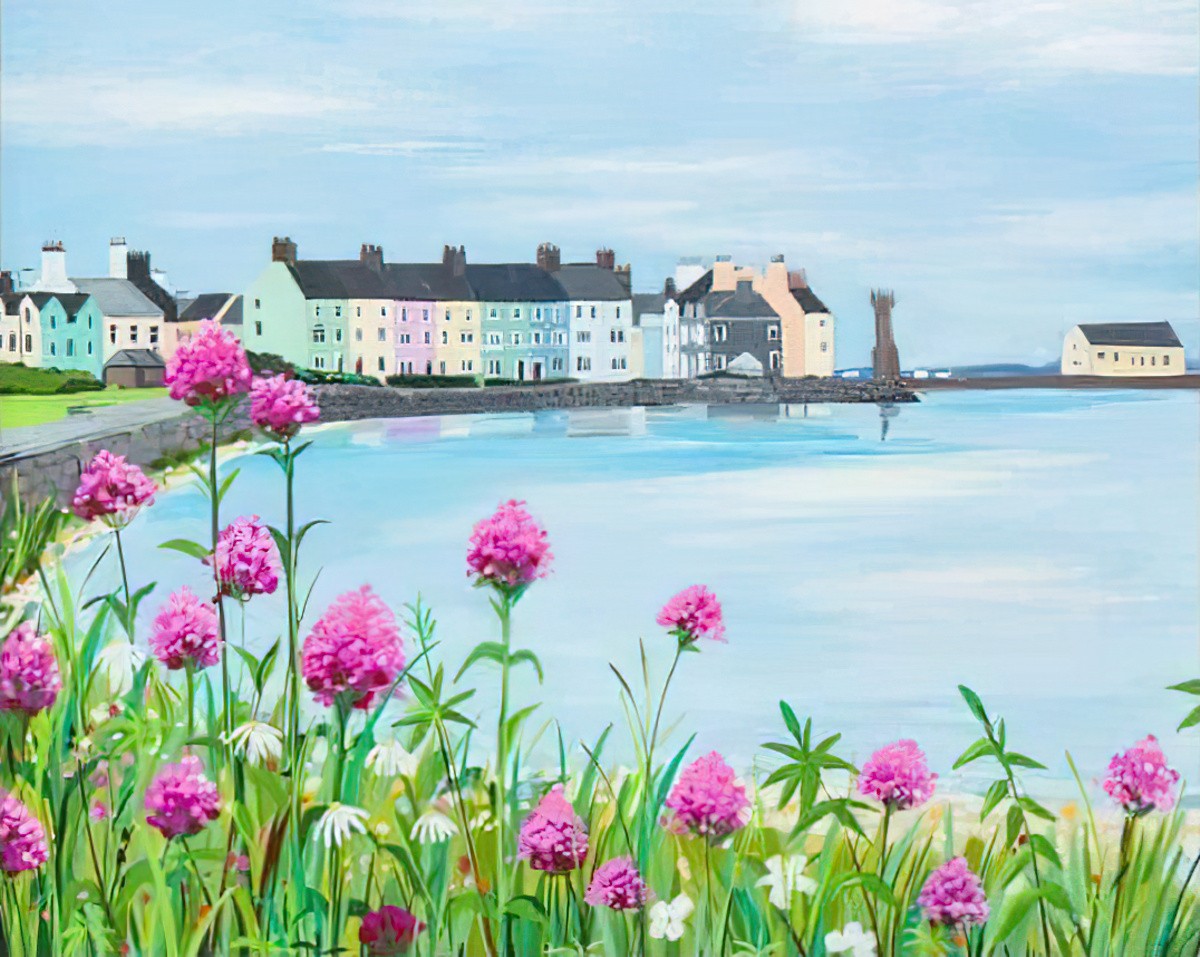
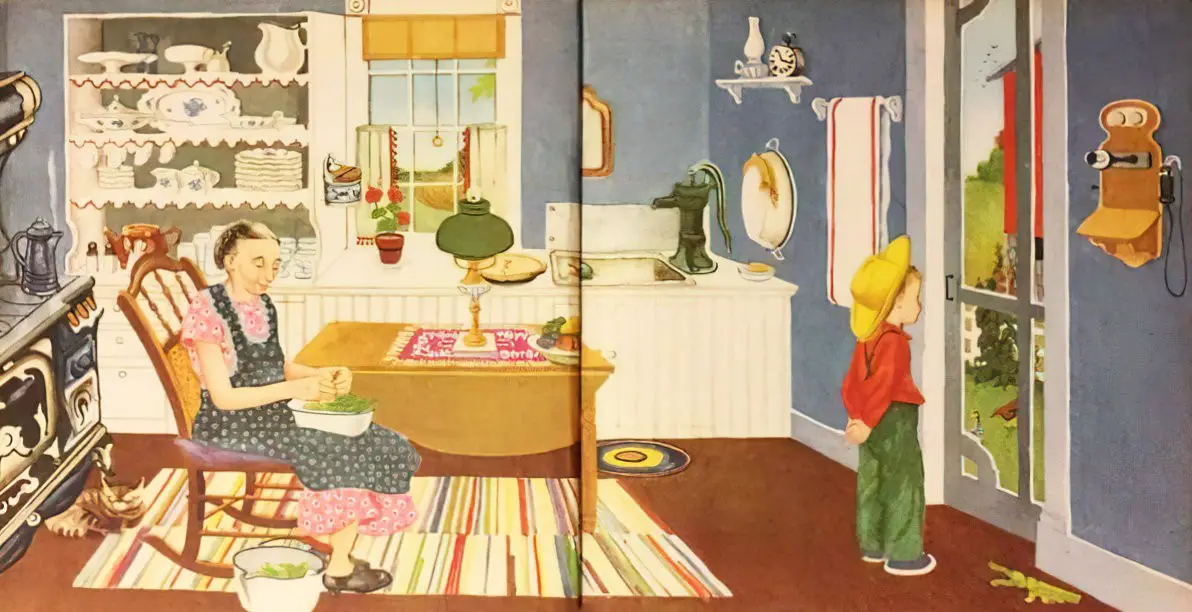
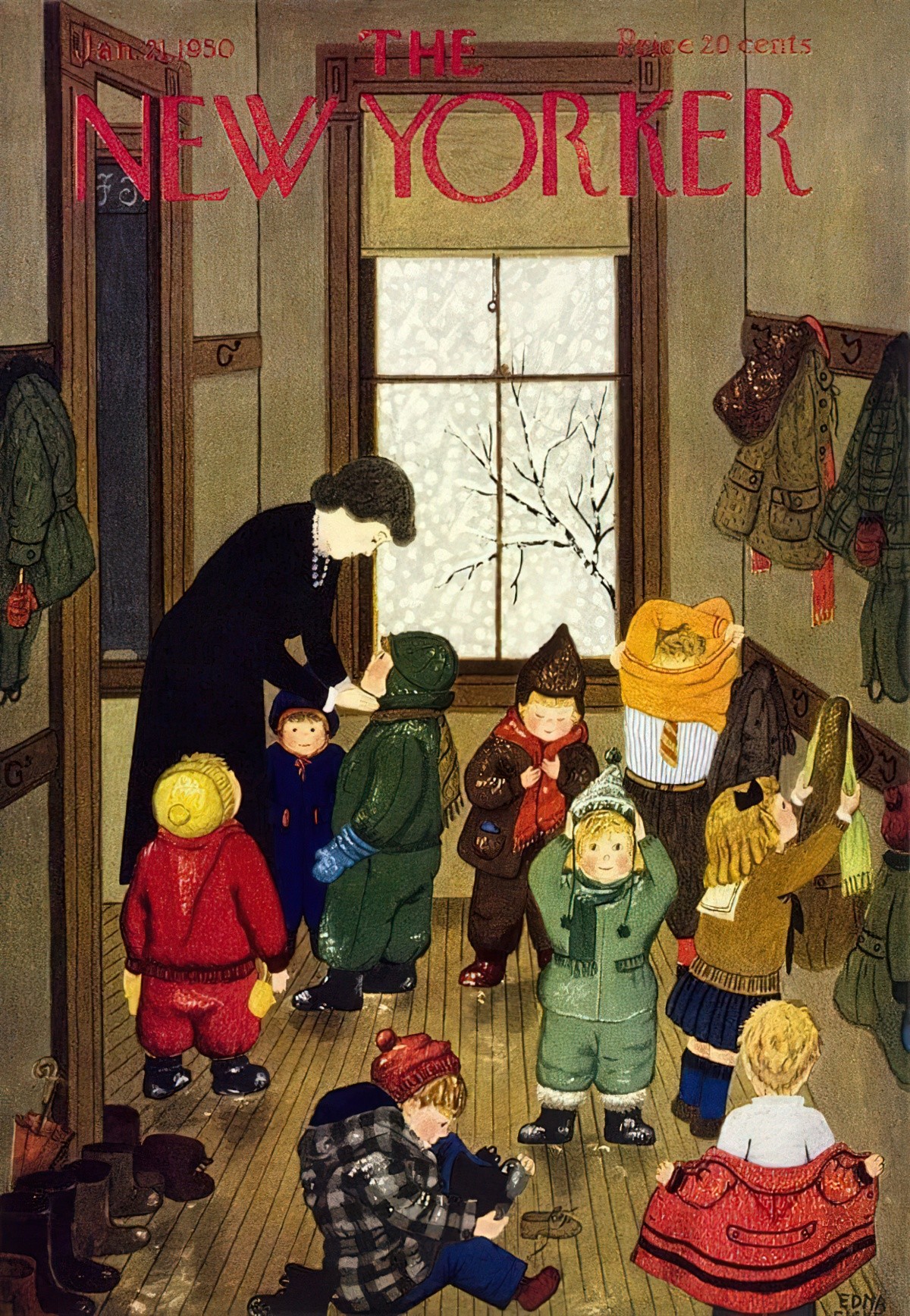
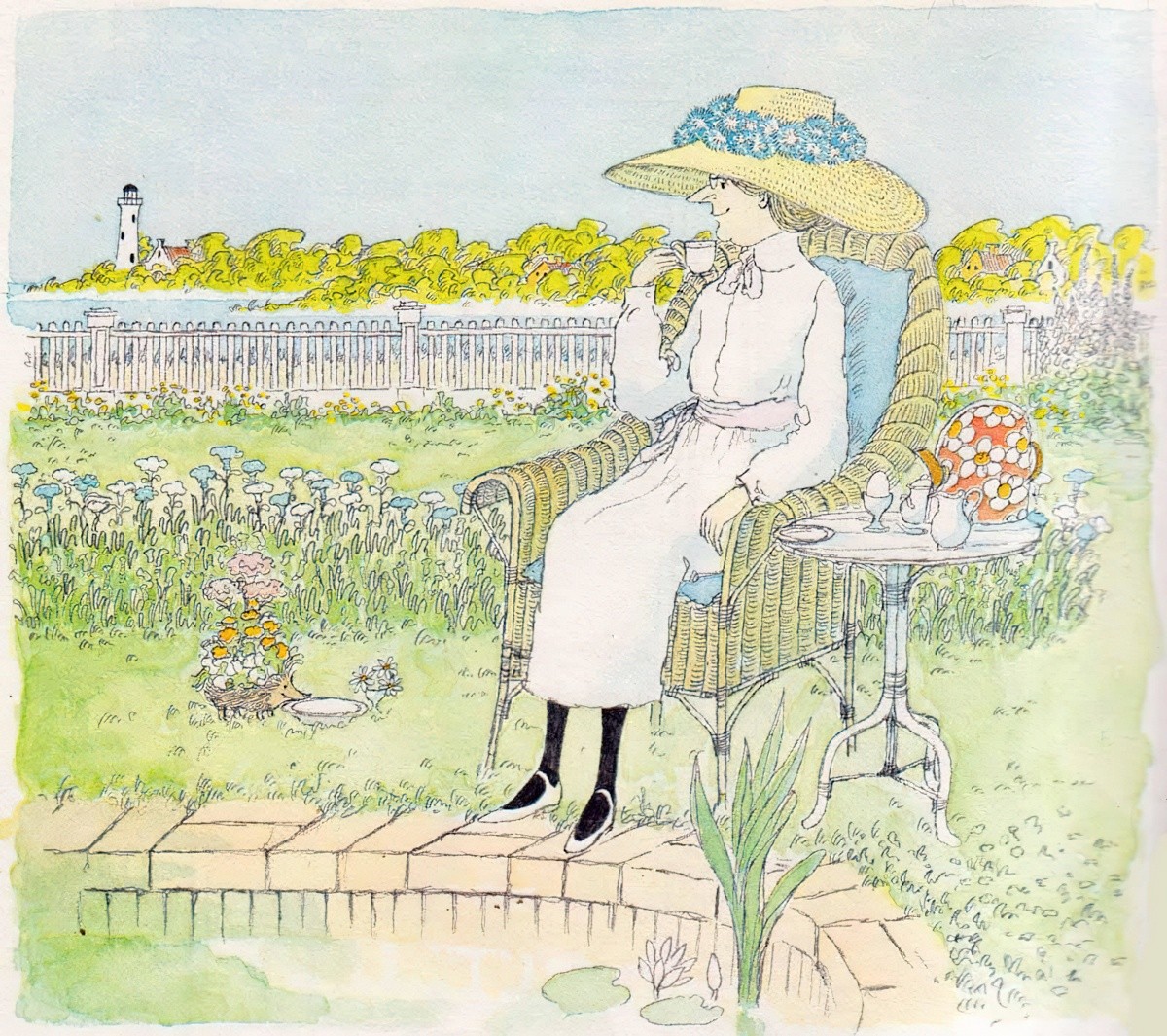
Jo Grundy and Lucy Grossmith are also working with a similar style.
